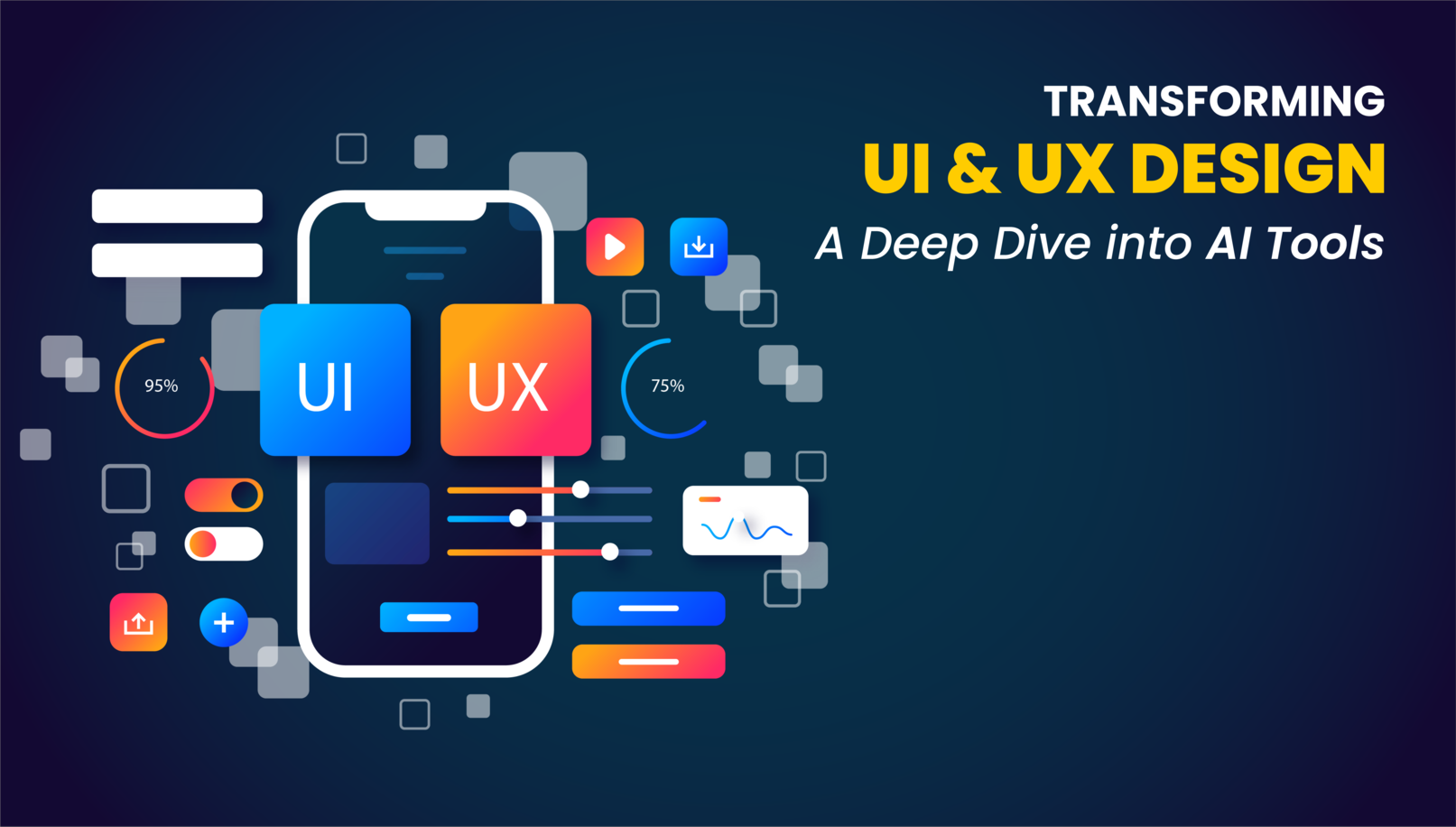Revolutionizing UI & UX Design: A Deep Dive into AI Tools

In the rapidly evolving landscape of design, the emergence of artificial intelligence (AI) has ignited a profound transformation. This revolution is especially pronounced within the domains of User Interface (UI) and User Experience (UX) design, where AI's impact is reshaping conventional approaches and amplifying the potential for innovation. This article embarks on an exploration of AI's profound influence on UI & UX design, delving deep into the intricate ways AI tools are revolutionizing the creation and optimization of digital interfaces, user interactions, and overall user experiences.
AI is significantly impacting the field of User Interface (UI) and User Experience (UX) design, revolutionizing how designers create digital products that are intuitive, user-friendly, and tailored to individual preferences. Here are some key areas where AI's impact on UI and UX design is most pronounced:
- Personalized User Experiences: AI allows designers to create personalized user experiences by analyzing user data, behavior, and preferences. This enables the design of interfaces that adapt in real-time, offering content, features, and layouts that are relevant to each user. Personalization enhances user engagement and satisfaction.
- Data-Driven Design Decisions: AI tools analyze large volumes of user data to identify patterns and trends. Designers can leverage this information to make informed design decisions, optimizing UI elements, layouts, and navigation based on user interactions and feedback.
- Automated User Testing: AI-powered tools can perform automated user testing by simulating user interactions and collecting data on user behavior. This data helps designers identify pain points, usability issues, and areas for improvement, ensuring a seamless user experience.
- Natural Language Interfaces: AI enables the development of natural language interfaces, such as chatbots and voice assistants, which enhance user engagement and accessibility. Designers need to ensure that these interfaces understand user intents and respond intuitively.
- Predictive Analytics: AI algorithms can predict user behavior and actions, allowing designers to anticipate user needs and provide relevant suggestions. For example, predictive search suggestions and content recommendations enhance user navigation.
- Visual Design Generation: AI can assist in generating visual design elements, such as color palettes, typography styles, and layout compositions. These generated designs can serve as starting points for designers, saving time and sparking creativity.
- Accessibility Enhancement: AI can automatically analyze digital products for accessibility compliance, flagging potential issues for designers to address. This ensures that the UI and UX are inclusive and accessible to users with disabilities.
- Rapid Prototyping and Iteration: AI-powered tools enable rapid prototyping of UI elements and interfaces, allowing designers to quickly visualize and iterate design concepts. This accelerates the design process and facilitates collaboration among design teams.
- Sentiment Analysis: AI can analyze user feedback and sentiment, helping designers gauge user reactions and emotions towards specific design elements. This information guides design decisions that resonate positively with users.
- Real-time Interaction Feedback: AI tools provide real-time feedback on user interactions, helping designers identify elements that receive the most engagement and those that may require adjustments.
- Dynamic User Journey Mapping: AI assists in creating dynamic user journey maps that adapt based on user behavior. This allows designers to identify optimal pathways and improve user flow.
- Automated Content Curation: AI-powered content curation tools analyze user preferences and behaviors to present relevant content, enhancing the user experience by delivering valuable information.
- A/B Testing Optimization: AI can optimize A/B testing processes by efficiently analyzing user responses to design variations and suggesting iterations for improved outcomes.
- Seamless Cross-Platform Experiences: AI ensures consistent user experiences across various devices and platforms by adapting interfaces to different screen sizes, resolutions, and functionalities.
- Fraud Detection and Prevention: For platforms involving transactions, AI can detect fraudulent activities through user behavior analysis, enhancing the security and trustworthiness of the UI and UX.
Kamtech's UI & UX Design Transformation
Kamtech invites you on an enlightening journey into the world of AI, presenting the leading tools in the market, their unique features, and how they can redefine your financial journey. These tools harness advanced machine learning models, ensuring data-driven decisions are precisely and timely.
- Galileo AI: Crafting UI Designs from Text Prompts Galileo AI is a cutting-edge tool that allows designers to create and customize UI designs from text prompts. This AI-powered platform streamlines the design process, making it more efficient and less time-consuming. Although pricing details are available upon request, the potential time and effort saved make Galileo AI a worthy consideration for any design team.
- GeniusUI: Generating UI Components GeniusUI focuses on generating UI components with AI. Its waitlist status reflects its growing demand in the design industry.
- Crito: Chatbot Interface for UI & UX Designs Crito is another innovative tool that uses a chatbot interface to generate UI & UX designs. It also provides codes from designs, making it a comprehensive solution for designers. Like GeniusUI, Crito is currently on a waitlist, reflecting the high demand for such AI-powered design tools.
- Magify.design: UX & UI Generation with Text and Video Prompts Magify.design creates UX & UI designs using text and video prompts, with unique features worth exploring.
- Frontitude: The UX Writing Assistant Frontitude assists with UX writing, tailoring texts to audiences and integrating with Adobe and Sketch.
- Fairpixels: Managing UI & UX Projects Fairpixels manages UI & UX projects with features like dashboard design and machine learning integration, catering to diverse needs.
The rise of AI in the realm of UI & UX design is undeniable. These AI tools not only streamline the design process but also enhance the quality of the output. As we continue to witness the evolution of AI in design, it's clear that these tools are not just a passing trend but a significant step towards the future of design. If you're looking to implement these AI tools in your company, consider consulting with us. We offer Generative AI Consulting and Software Development services, and can guide you in harnessing the power of AI for your design needs.
Frequently Asked Questions: AI in UI & UX Design
Q: What is AI's role in UI & UX design?
A: AI enhances UI & UX design by automating tasks, generating designs, and analyzing user behavior for insights.
Q: Can AI replace human designers in UI & UX?
A: AI complements designers by automating tasks, but human creativity, empathy, and understanding remain crucial for crafting impactful designs.
Q: How do I choose the right AI tool for UI & UX design?
A: Consider factors like features, integration capabilities, ease of use, scalability, and alignment with your design goals. We, Kamtech's team of AI Consultants and Software Development Experts, can help you in choosing the most suitable AI tool for your customized solutions.

